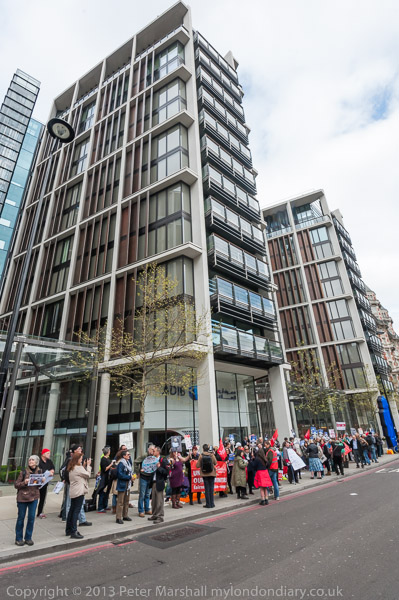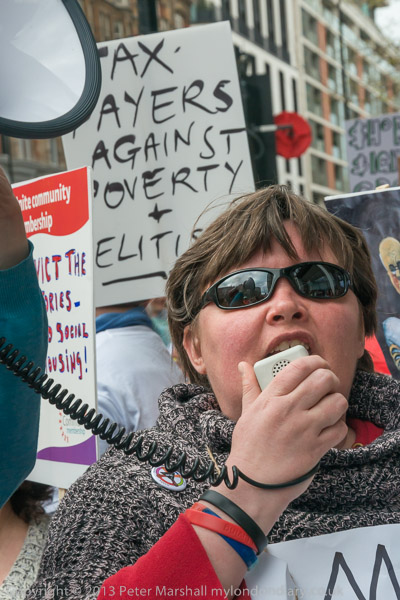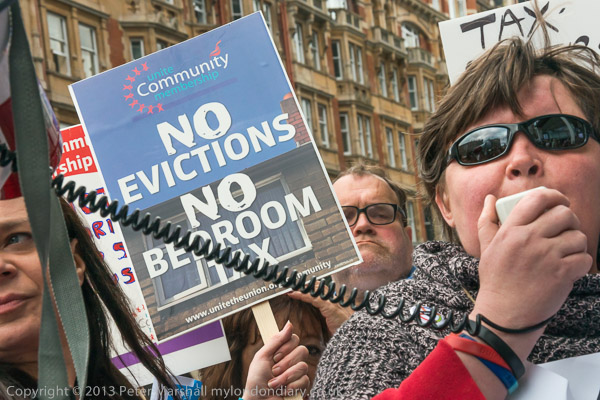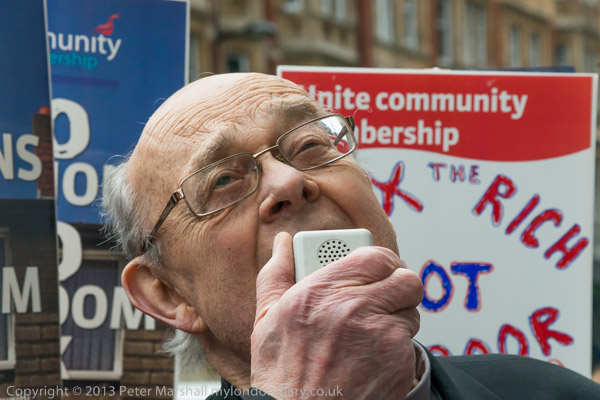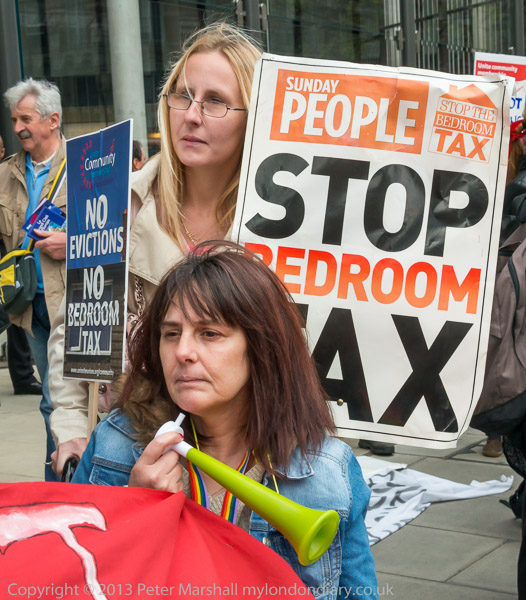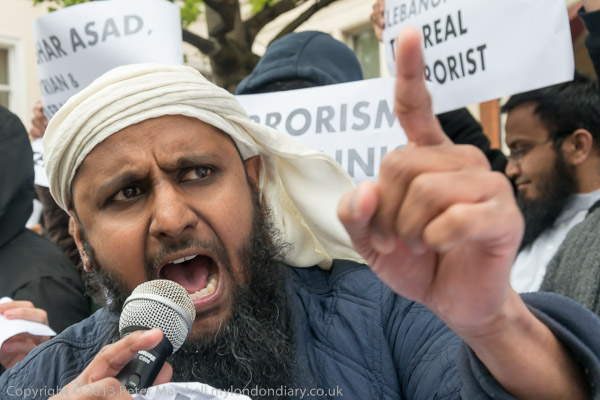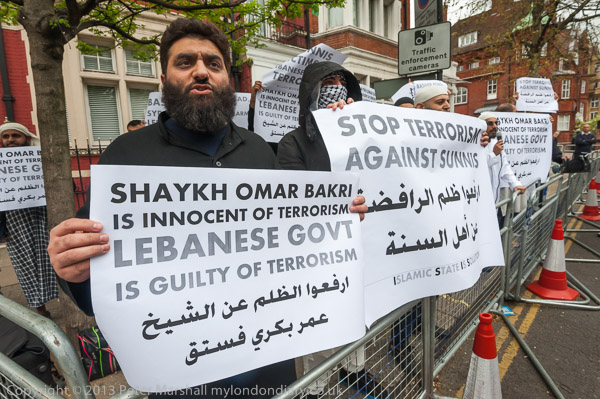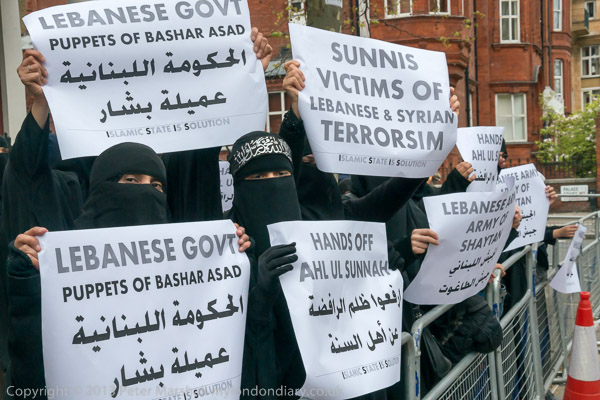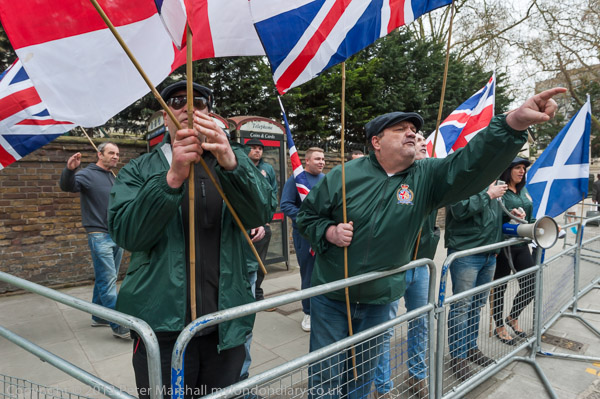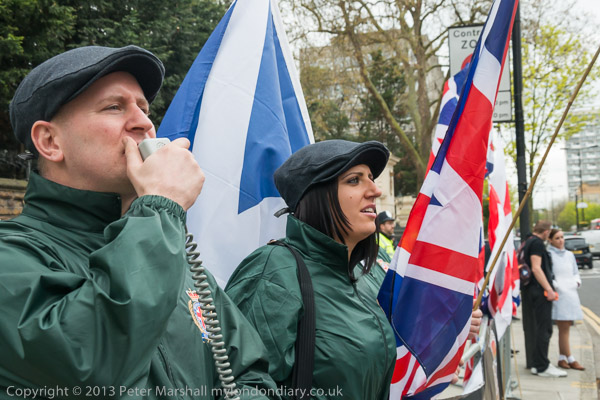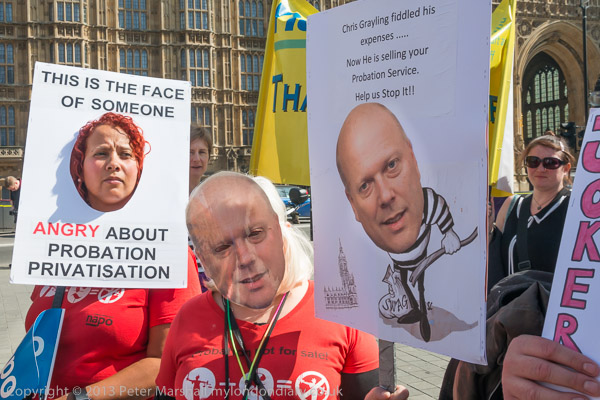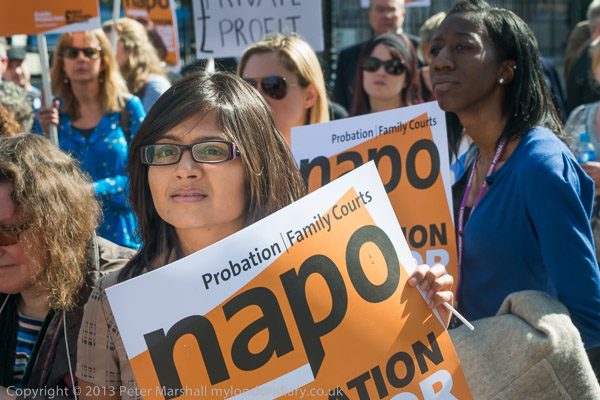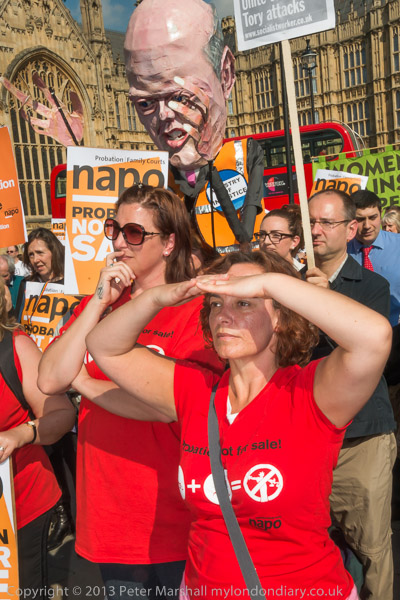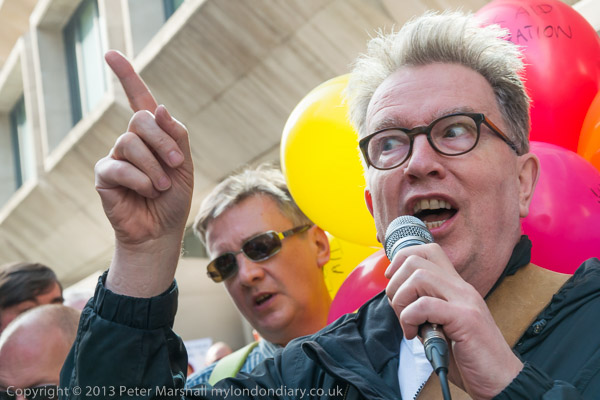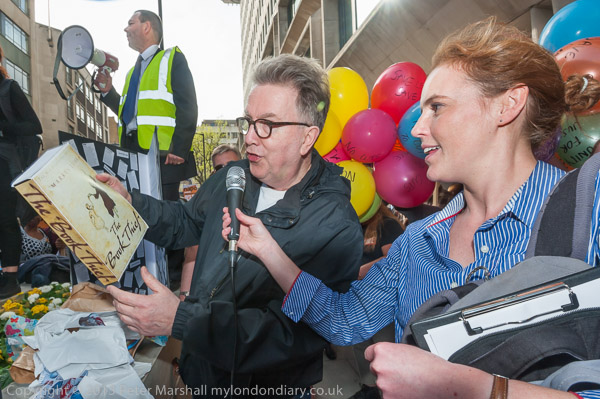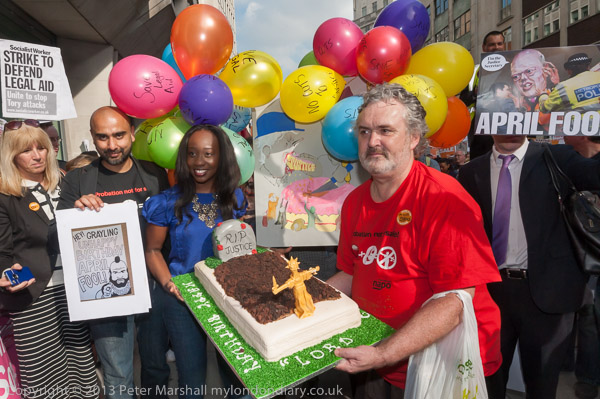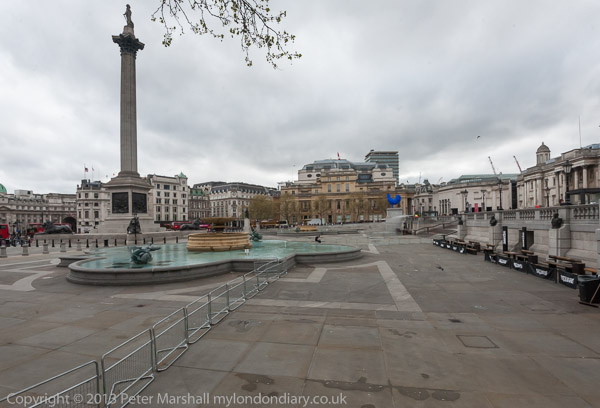
I’d heard a day or two earlier that London’s Mayor had decided to close Trafalgar Square on World Pillow Fight Day, but it still came as a surprise to find the square entirely empty, surrounded by barriers and a a thin line of police and ‘Heritage Wardens’ when I arrived a few minutes before the pillow fight was due to begin.
The Mayors office had put out that the event had been cancelled, but that didn’t stop at least a thousand people turning up with pillows. But instead of taking place in the large area of the main square, everyone was crammed into the much smaller space of the North Terrace. I think because until fairly recently that was a road, it comes under the control of Westminster City Council rather than the Mayor of London.
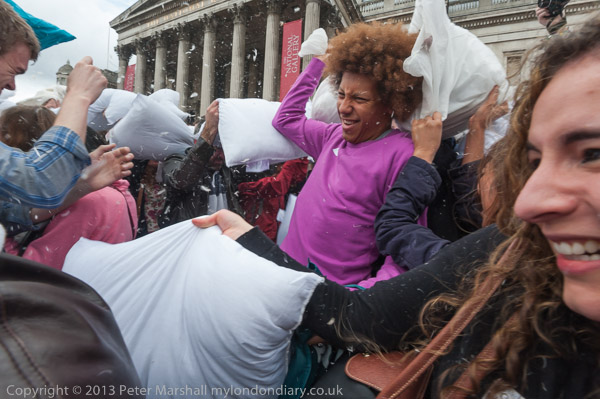
I was rather disappointed that the pillow fighters didn’t simply push over the barriers and swarm into the square, instead staying on the North Terrace, though of course the organisers couldn’t encourage this – and had come under pressure from the Mayor’s guys to call the whole thing off. But it was the kind of thing that once started could hardly be stopped.
I don’t know why the Mayor decided to be a spoilsport. Its the kind of event that is good for tourism after all – and there were quite a few tourists taking part as well as a good crowd watching. There are quite a few commercial events that take place in the square that I think should be stopped – its a place that should be for everyone to enjoy. And I’d like to see an end to the ban on unauthorised protests there – it is after all one of the traditional areas in London for protest.
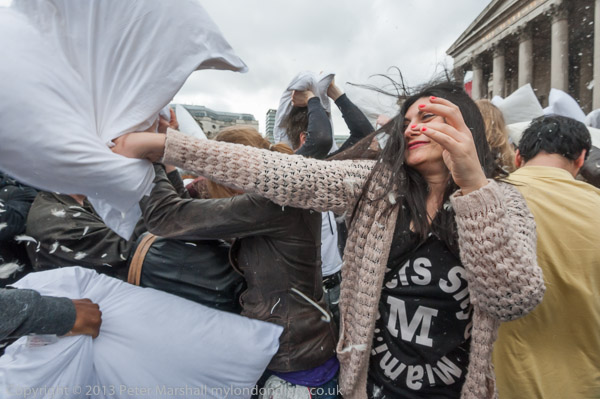
There were different versions of how long the fight was supposed to last, from 15 minutes to an hour, but I understand it continued for rather longer this year, though I had to leave after half and hour. And I was quite pleased to be out of it, as the air got pretty full of feathers and dust and I was beginning to suffer a little.
There are a few sensible rules for the pillow fight, and the one that I particularly like is number 3: “Do not hit anyone with a camera, they are our friends! ”
Of course, this doesn’t mean that if like me you like to get into the thick of things you won’t get hit by quite a few pillows. They are going everywhere and the odd one is bound to end on your head or camera gear. Though some people will apologise after having hit you! But it does mean that you won’t get set upon and attacked deliberately.
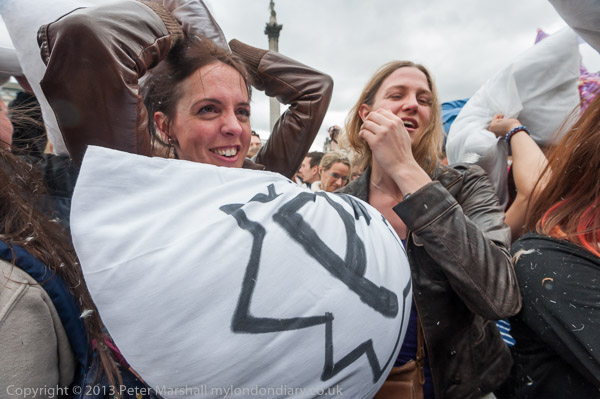
Quite a few frames I took ended up being full of pillow, and others came out rather differently to what I’d expected from the viewfinder,. with people and pillows moving pretty chaotically in every direction. Its the kind of situation where you have to react rapidly and don’t have much time to think.
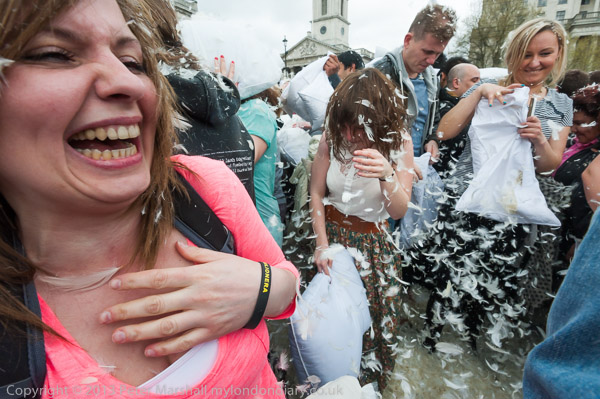
Before things kicked off I’d taken a few precautions. I’d taken the flash out of the hot shoe and put it away in my bag, and decided I could only really look after one camera and one lens in the mêlée. I chose the D700 and the 16-35mm and put everything else well out of the way in my camera bag, carefully closing it up.
I’d decided that ISO1250 (or really 1600, as I had 1/3 stop exposure bias set) would give me decently fast shutter speeds to stop motion and plenty of depth of field from a moderate to small aperture, especially since for most pictures I was at around 16mm on the zoom. I was using the camera on the P setting (though A or S would have done as well) and typically shutter speeds were around 1/500 – 1/800s and apertures f8 -f11, depending on which way I was facing and how many pillows were blocking out the light.
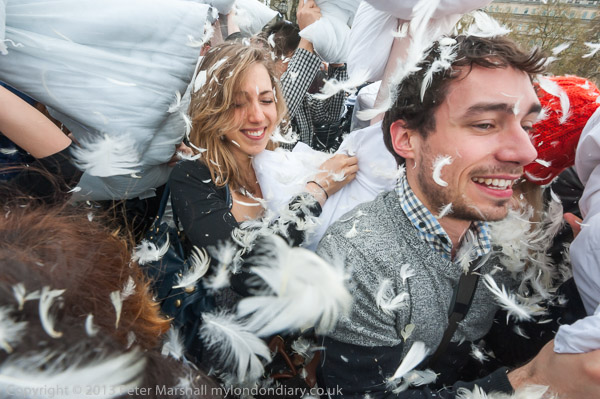
Subject distances were rapid and changing, with some at very close range. I could have used zone focus, but sometimes people were close than this would have rendered sharp, so I opted for autofocus, using the C setting – continuous-servo AF – and auto area AF. This is supposed to be able to distinguish faces with Type G or D lenses like the 16-35mm, and the autofocus is fast. It all seemed to work pretty well.
Plenty more pictures at World Pillow Fight Day on My London Diary.
I had a shower and a complete change of clothes when I got home, and emptied out all my pockets, took everything out of my camera bag and vacuumed it. A month later I’m still finding the odd feather in unexpected places.
Continue reading Pillow Fight






